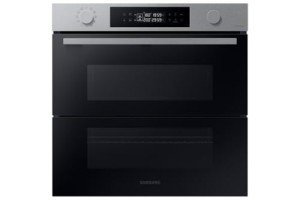The Best Way To Explain Ovens Built In To Your Mom
The Comprehensive Guide to Built-In Ovens: A Modern Kitchen Essential
Built-in ovens have ended up being a staple in contemporary kitchen areas, integrating visual appeals, performance, and area efficiency into a single home appliance. As property owners strive for both practicality and design, understanding the functions, benefits, and factors to consider of built-in ovens can significantly enhance the cooking experience. This short article dives into what built-in ovens are, their diverse types, installation considerations, and FAQs to help consumers make informed decisions.
What is a Built-In Oven?
A built-in oven is a kitchen device created to be integrated into cabinets, producing a streamlined, cohesive try to find the kitchen. Unlike freestanding ovens, which occupy extra flooring space, built-in ovens are confined within wall systems or cabinetry. They are available in numerous configurations and sizes, permitting customized options that accommodate the requirements of diverse families.
Kinds Of Built-In Ovens
Built-in ovens can be classified into different types based upon their features and cooking approaches. Here are a few of the most typical types:
Single Built-In Ovens
- Best for small kitchen areas and homes with modest cooking requirements.
- Generally have one main cooking compartment, developing a compact footprint.
Double Built-In Ovens
- Perfect for devoted cooks and larger families.
- Functions 2 different cooking compartments for flexible meal preparation.
Wall Ovens
- Installed at eye level for simple access.
- These ovens typically include convection technology for even cooking results.
Steam Ovens
- Use steam to cook food, protecting moisture and nutrients.
- Great for health-conscious individuals.
Mix Ovens
- Merge microwave and conventional oven functionalities.
- Offer versatility for quick meals and standard baking.
Italian or European Style Ovens
- Typically designed with distinct visual appeals and advanced cooking innovations.
- Popular for high-end kitchen styles.
Advantages of Built-In Ovens
Built-in ovens offer an array of advantages that appeal to contemporary homeowners seeking both functionality and visual appeals. Some of these benefits consist of:
- Space Efficiency: Built-in ovens save valuable counter space, which is especially helpful in smaller sized kitchens.
- Boosted Aesthetics: With a customized appearance, built-in ovens enhance the total style of the kitchen while offering a seamless combination with cabinetry.
- Versatile Cooking Capacity: Available in various sizes, these ovens cater to the cooking needs of different families, from single residents to large households.
- Accessibility: The installation at eye level makes built-in ovens easier to gain access to, lowering the risk of spills or injuries when positioning or eliminating hot meals.
- Lower Energy Consumption: Many built-in ovens featured energy-efficient modes that assist reduce electric consumption over time.
Installation Considerations
Installing a built-in oven requires careful planning and consideration. Here are some elements to keep in mind:
- Dimensions: Before acquiring a built-in oven, measure the area readily available to make sure a proper fit. Built-in ovens can be found in specific basic sizes, so it is crucial to pick the ideal one.
- Ventilation: Adequate ventilation is required for effective operation. Guarantee there is a correct exhaust system that abides by local building regulations to prevent overheating.
- Electrical Requirements: Built-in ovens may need particular electric outlets or wiring. Seek advice from a qualified electrician to make sure that the setup adheres to security requirements.
- Expert Installation: Although some house owners go with DIY setup, employing a professional can assist guarantee safety and proper setup for optimum efficiency.
Maintenance Tips for Built-In Ovens
Maintaining your built-in oven not only prolongs its life expectancy however likewise guarantees effective operation. Here are some important upkeep suggestions:
Regular Cleaning:
- Wipe down interior surfaces after each usage to prevent accumulation.
- Usage vinegar and baking soda for non-toxic cleaning.
Examine Seals:
- Inspect the door seals to avoid heat loss.
- Change damaged seals without delay.
Test Thermostat:
- Periodically check the temperature level accuracy with an oven thermometer. Adjust settings as necessary.
Service Annually:
- Schedule professional maintenance once a year to check electrical components and make sure safe operation.
Maintenance Task
Frequency
Function
Tidy interior
After each use
Avoid accumulation and smells
Check seals
Regular monthly
Guarantee no heat gets away
Test thermostat
Every 6 months
Examine temperature level precision
Expert service
Every year
Ensure ideal efficiency
FAQs About Built-In Ovens
1. Do built-in ovens come in various sizes?Yes, built-in ovens are available in different sizes to fit different kitchen setups and culinary needs. It is vital to determine the offered area before purchasing. 2. Can built-in ovens be utilized as regular ovens?Absolutely. Built-in ovens operate like regular ovens,
enabling you to bake, broil, and cook a variety of meals. 3. Are built-in ovens energy-efficient? Lots of built-in ovens come with energy-saving functions and are designed to utilize less
electricity than freestanding models. 4. For how long does integrated oven sale take?Installation time can vary based on intricacy but generally ranges from 1 to 3 hours. It is advisable to work with an expert for ideal outcomes. 5. What is the life-span of a built-in oven?With appropriate upkeep, built-in ovens can last anywhere from 10 to 15 years or longer.
Built-in ovens provide a wide range of benefits for modern homes, integrating convenience, energy performance, and trendy design into one option.
When choosing and setting up a built-in oven, it's crucial to think about the type that best fits your cooking routines, offered space, and aesthetic choices. By understanding the advantages, setup requirements, and upkeep required, property owners can elevate their cooking experience and produce sensational kitchen areas that impress both household and visitors alike. Buying a built-in oven can be an advantageous addition that streamlines cooking, improves home worth, and savors cooking delights for many years to come. 